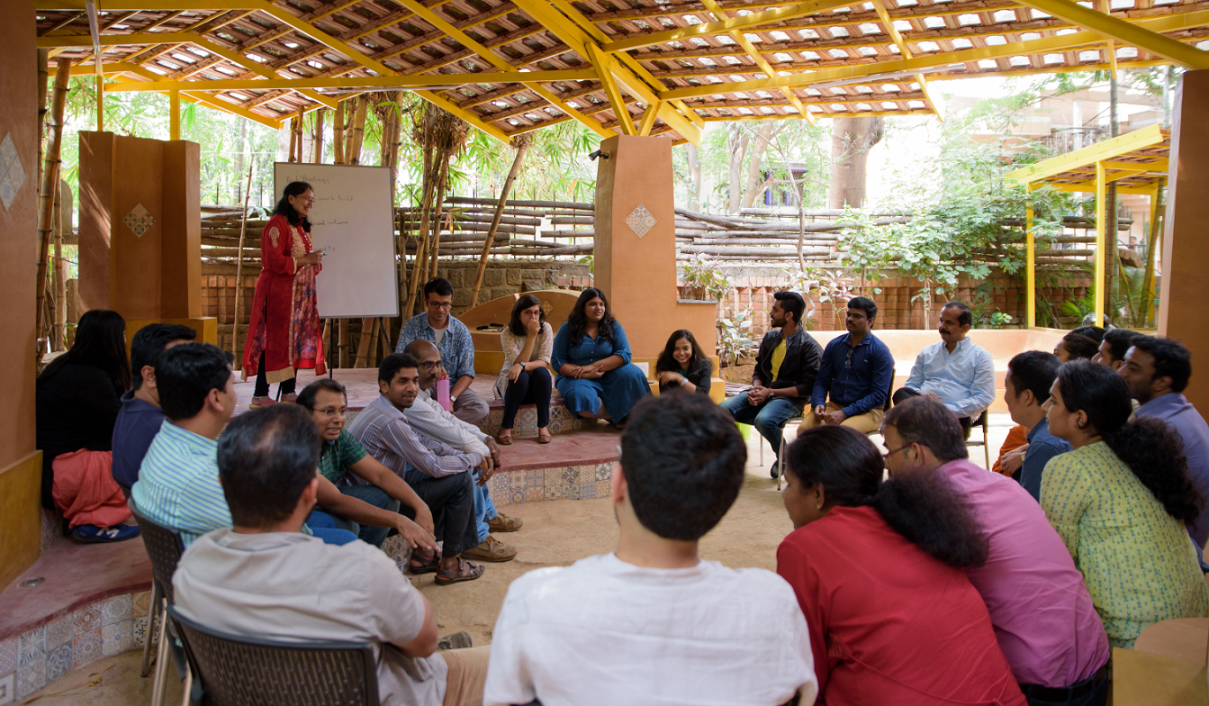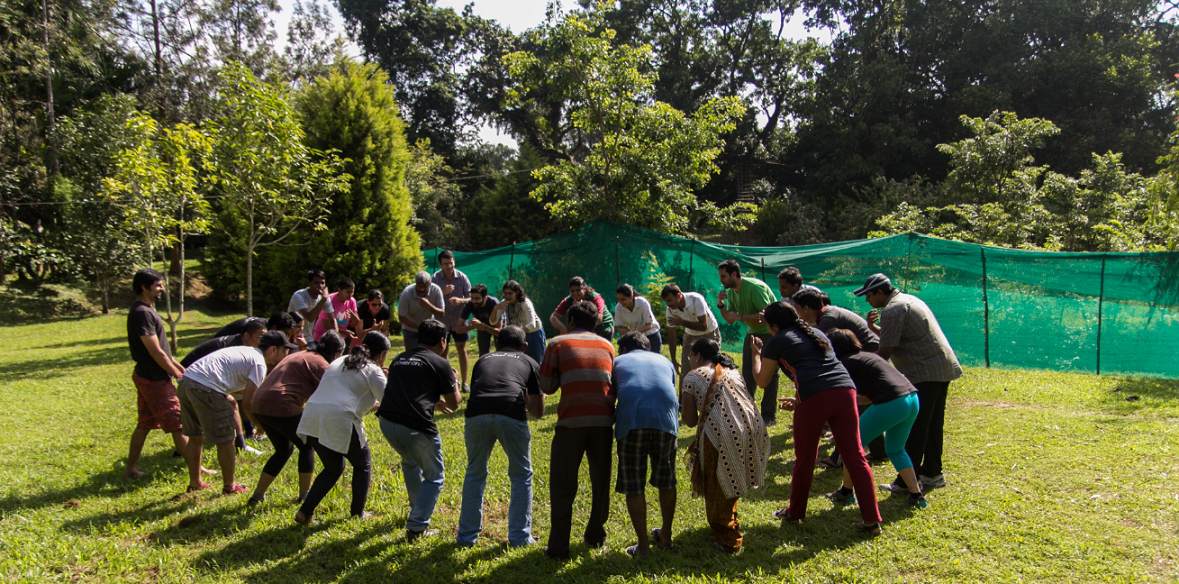The development sector in general believes that people are our biggest asset and that protecting and developing the team is a major challenge when scaling up. There is, however, one question that we still need to crack satisfactorily: How do we–and can we, indeed–maintain an organisation’s culture while growing sustainably?
The ethos of a nonprofit is often driven by the value and vision of its founding members, who have to lead by example and allow that culture to cascade from the top. Allowing that culture to permeate through geographies and personalities requires a multifaceted approach that goes beyond a simple ‘strategy’.
As we at Quest Alliance continue to develop ways to nurture our staff, here are some learnings from our journey so far.

1. Recruit for people, not roles
It’s nearly always possible to find people with the right skills for a given role. What’s harder is finding someone who is aligned on an ideological level. As the company grows, it’s often no longer possible for founders to be involved in every interview. What is possible, however, is to ensure that there is at least one interview round dedicated to ensuring a culture and value fit. This is the point at which you can establish that a candidate is motivated and excited by the same things that the organisation is driven by.
2. Make co-creation the norm
Making meaning together as a team is fundamental. Whether it’s through workshops to thrash out how the mission statement should develop or multi-stakeholder discussions on strategy, it ensures that outcomes are jointly produced and mutually valued. When co-creation is the norm, culture, vision and spirit don’t need to be passed down from above but are infused throughout the organisation.
3. Develop multiple ways to articulate and share the organisation’s culture
A shared understanding of culture is at the heart of successful talent management. Culture doesn’t mean that every employee must act or think in the same way, but it does mean that there are key attitudes or values that all staff subscribe to – this could be a commitment to self-learning, a shared understanding of innovation or an emphasis on inclusion.
There’s no one way to nurture that culture. In fact, we’ve found that it is important to have several means of articulating and developing it. Events—formal as well as informal—are one way to create space for people to engage and share with each other. Our ‘First Fridays’, where we get together on the first Friday of the month to make pizza and spend time with each other, allow for conversations and sharing among our team members. Formal events such as our annual staff retreat and regular team meetings help us to regularly connect to why we do what we do.

Photo Courtesy: Quest Alliance
4. Create plenty of opportunities for honest feedback
It’s one thing to say that you’re open to receiving feedback from your staff, but much more difficult to create safe places and opportunities for that feedback to come forward. Allowing employees, rather than supervisors, to lead certain reviews (for example, their 45-day review after joining) has proven effective for us. Creating more of these opportunities is an ongoing target.

5. Set clear expectations
The learning curve for new employees can be long. Setting clear expectations early on can make sure that everyone is on the same page. A structured induction can help new recruits quickly connect with other teams and understand the context in which they are working. We follow that up with a 90-day ‘goal setting’ programme in which new employees devise both job-specific and more general goals in collaboration with their supervisors. They get together to discuss these at an employee-led meeting after 45 days and at a supervisor-led meeting after 90 days.
6. Support individual career paths
The opportunity for career growth and development is consistently highlighted by employees as a key factor for job satisfaction. Enabling employees to chart their own career journeys is certainly a factor in retention, but also allows organic leadership growth from within.
For the last one year, our staff development has been steered through the ‘Reach for the Stars’ programme which involves self-reflection, peer feedback, goal setting and reviews. These goals can be both role related as well as personal, and the entire process is designed to enable staff to visualise and then realise their ambitions. Within this, they have access to professional development funds, study time or even sabbatical leave.

Photo Courtesy: Quest Alliance
7. Recognise great work
We all need to know that our work is both recognised and valued. There are many ways to do this, and it doesn’t (and shouldn’t) always need to come for the leadership team. Internal sharing platforms (we use Social Cast) can allow staff to thank one another for their contributions. While more formal recognition can come during annual appraisals and work anniversaries, a daily acknowledgement of good work is equally important.
8. Understand staff needs
Team members don’t exist in a vacuum—they come with their own contexts, passions, relationships and history. This means that different employees will work to their full potential in different ways. Organisations must understand that and create ways to accommodate that diversity, be it through flexible working hours, sabbatical opportunities, parental leave or a robust inclusion strategy.
Employees have strong support networks outside of the office. We acknowledge that annually at Quest Day, where we host employees, support staff and contractors to celebrate what we have collectively achieved.
9. Walk the talk
There’s nothing more de-motivating than a gulf between what exists on paper and what is done in practice. If you’re a development organisation committed to anytime, anywhere, anyone learning, are you creating multiple opportunities for your staff to learn? If your organisation values innovation above all else, are your staff provided with opportunities to innovate, fail and try again?
As you negotiate the path to good talent management, it is also important to recognise your ability to get aspects of talent management wrong and be open to working to continually make it better. For us right now, that’s about working on feedback from our team about making self-care an integral part of our values, developing and articulating our gender and inclusion strategy more strongly and ensuring that our ‘second line leadership’ is provided with the right training to take our growth forward sustainably in the coming years.
Being open to learning is as important in our internal talent management as it is in the work we do in the field.
—
* With inputs from Maegan Dobson.




